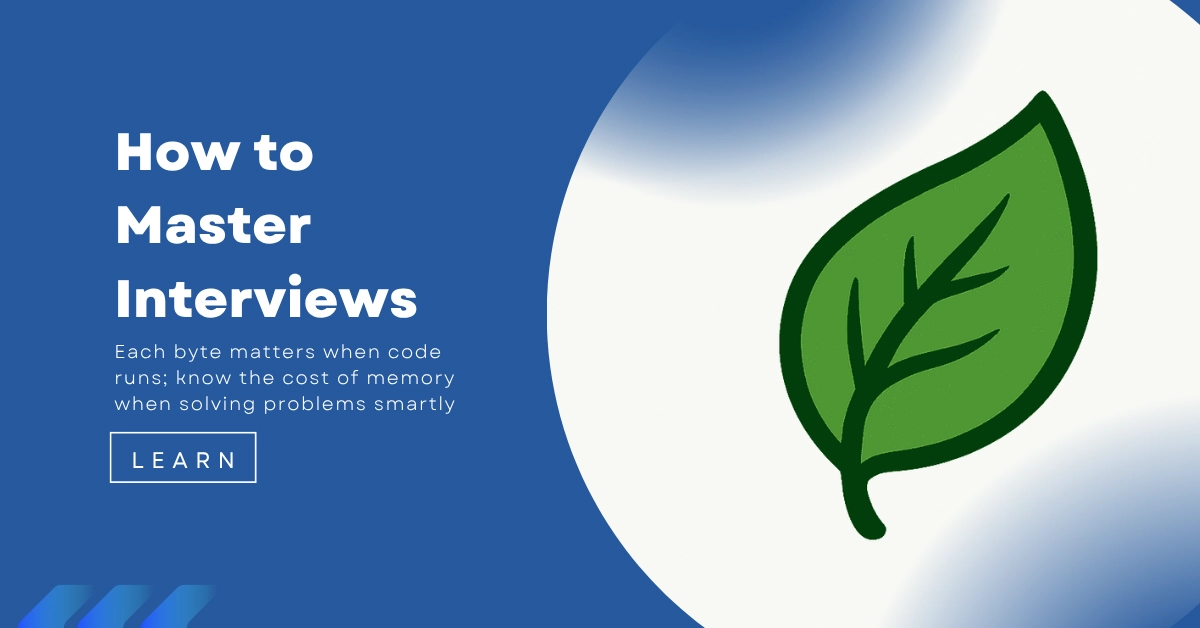Whether you’re sitting in a nerve-wracking technical interview, debugging a stubborn piece of code, or architecting a new feature from scratch, having a systematic approach to problem-solving can be the difference between success and frustration. Today, I want to share a powerful 5-step framework that has helped countless developers tackle even the most challenging coding problems with confidence.
This methodology isn’t just about writing code—it’s about thinking like a seasoned developer and approaching problems in a way that leads to robust, maintainable solutions.
The 5-Step Problem Solving Framework
Step 1: Understand the Problem Completely
This might seem obvious, but you’d be surprised how many developers jump straight into coding without truly understanding what they’re building. This step is absolutely crucial and often determines whether your solution will succeed or fail.
What does “understanding the problem” really mean?
- Clarify requirements: What exactly needs to be built?
- Identify constraints: Are there performance requirements? Memory limitations?
- Understand the context: How will this solution be used in the real world?
- Define success criteria: What makes a solution “correct”?
In interview scenarios: Ask clarifying questions! Interviewers actually appreciate when candidates dig deeper into the problem. Some good questions might be:
- “What should happen if the input is empty?”
- “Are there any performance constraints I should be aware of?”
- “Can you walk me through a typical use case?”
In real-world development: Take time to read the requirements carefully, discuss with stakeholders, and document your understanding. Don’t start coding until you’re confident you know what you’re building.
Example scenario: Let’s say you’re asked to “create a function that validates email addresses.” Before writing any code, you should understand:
- What constitutes a valid email format?
- Should it check if the email actually exists?
- How should errors be handled?
- What should the function return?
Step 2: Explore Concrete Examples
Once you understand the problem conceptually, the next step is to work through specific examples. This helps you identify edge cases, understand the expected input/output relationship, and catch potential issues early.
Why examples matter:
- They reveal edge cases you might miss
- They help you understand the problem better
- They serve as test cases for your solution
- They help you communicate your understanding to others
Types of examples to consider:
- Normal cases: Typical inputs that represent common usage
- Edge cases: Boundary conditions, empty inputs, maximum/minimum values
- Invalid inputs: What happens when users provide bad data?
- Special cases: Unique scenarios specific to your problem domain
Practical example: If you’re building a function to find the longest word in a sentence, consider these examples:
# Normal case
sentence1 = "The quick brown fox jumps"
# Expected output: "jumps" (5 characters)
# Edge case: tie for longest
sentence2 = "cat dog elephant"
# Expected output: "elephant" or define tie-breaking rule
# Edge case: empty input
sentence3 = ""
# Expected output: empty string or None?
# Edge case: single word
sentence4 = "hello"
# Expected output: "hello"
# Special case: punctuation
sentence5 = "Hello, world!"
# Expected output: "Hello," or "Hello" or "world"?
Working through these examples helps you understand exactly how your function should behave in different situations.
Step 3: Break Down the Problem
Now that you understand what you need to build and have explored various scenarios, it’s time to create a game plan. Don’t start coding yet! Instead, break the problem down into smaller, manageable steps.
Benefits of breaking down problems:
- Makes complex problems feel manageable
- Helps you identify potential challenges early
- Creates a roadmap you can follow
- Allows you to show your thought process (crucial in interviews)
- Helps you estimate time and effort
How to break down effectively:
- Identify the major components or phases
- List the steps in logical order
- Note any dependencies between steps
- Identify which steps might be challenging
Example: Building a word frequency counter
Instead of jumping into code, plan it out:
Step 1: Clean the input text
- Remove punctuation
- Convert to lowercase
- Handle special characters
Step 2: Split text into individual words
- Handle multiple spaces
- Remove empty strings
Step 3: Count word occurrences
- Use a dictionary/hash map
- Iterate through words and increment counts
Step 4: Format and return results
- Sort by frequency (if required)
- Return in specified format
This breakdown gives you a clear roadmap and helps you tackle each piece individually.
Step 4: Solve the Problem (Start Simple)
Here’s where many developers go wrong: they try to solve the most complex version of the problem right away. Instead, start with a simpler version that you can definitely solve, then gradually add complexity.
The “Start Simple” philosophy:
- Solve a version you’re confident about first
- Build momentum and confidence
- Create a working foundation to build upon
- Reduce the risk of getting stuck completely
Strategies for simplification:
- Ignore edge cases initially: Handle the normal cases first
- Use brute force approaches: Optimize later if needed
- Hard-code some values: Replace with dynamic solutions later
- Remove constraints: Add back performance requirements later
Example: Password strength checker
Instead of trying to implement all password rules at once:
# Start simple: just check length
def check_password_strength_v1(password):
if len(password) >= 8:
return "Strong"
else:
return "Weak"
# Add complexity: check for numbers
def check_password_strength_v2(password):
has_minimum_length = len(password) >= 8
has_number = any(char.isdigit() for char in password)
if has_minimum_length and has_number:
return "Strong"
else:
return "Weak"
# Add more complexity: check for special characters
def check_password_strength_v3(password):
import string
has_minimum_length = len(password) >= 8
has_number = any(char.isdigit() for char in password)
has_special = any(char in string.punctuation for char in password)
strong_criteria = [has_minimum_length, has_number, has_special]
if sum(strong_criteria) >= 2:
return "Strong"
elif sum(strong_criteria) == 1:
return "Medium"
else:
return "Weak"
Each version builds upon the previous one, making the development process much more manageable.
When you get stuck:
- Step back and simplify further
- Focus on one small piece you can solve
- Use print statements to debug your thinking
- Take a break and return with fresh eyes
Step 5: Look Back and Refactor
This is perhaps the most important step for your growth as a developer, yet it’s the one most often skipped. After solving the problem, take time to analyze your solution and improve it.
Why reflection matters:
- Helps you learn from each problem
- Improves your pattern recognition
- Makes you a better problem solver over time
- Often reveals better solutions
- Helps you avoid similar mistakes in the future
What to look for when reviewing your code:
- Correctness: Does it handle all the cases you identified?
- Efficiency: Can it be optimized for time or space?
- Readability: Is the code clean and well-organized?
- Maintainability: Would other developers understand this code?
- Reusability: Are there parts that could be extracted into separate functions?
Example refactoring:
Initial solution (functional but could be improved):
def find_max_element(numbers):
max_val = numbers[0]
for i in range(len(numbers)):
if numbers[i] > max_val:
max_val = numbers[i]
return max_val
After reflection, several improvements become apparent:
def find_max_element(numbers):
# Handle edge case
if not numbers:
return None
# More Pythonic iteration
max_val = numbers[0]
for num in numbers[1:]:
if num > max_val:
max_val = num
return max_val
# Or even better, use built-in function
def find_max_element(numbers):
return max(numbers) if numbers else None
Questions to ask during reflection:
- “Is there a simpler way to achieve the same result?”
- “What would happen if the input was much larger?”
- “How would I explain this code to a junior developer?”
- “Are there any assumptions I’m making that might not hold?”
Applying This Framework in Different Contexts
In Technical Interviews
Do’s:
- Think out loud throughout the entire process
- Ask clarifying questions before coding
- Write down your plan before implementing
- Test your solution with the examples you created
- Discuss potential improvements even if you don’t implement them
Example interview flow:
Interviewer: "Write a function to reverse a string."
Candidate: "Great! Let me start by understanding the problem.
When you say reverse a string, do you mean character by character?
Should I handle Unicode characters specially?
What should I return for an empty string?"
[After clarification]
"Let me work through some examples:
- 'hello' → 'olleh'
- '' → ''
- 'a' → 'a'
Now let me break this down:
1. Iterate through the string backwards
2. Build a new string with characters in reverse order
3. Return the result
Let me implement this step by step..."
In Real-World Development
Project scenario: Building a search feature
- Understand: What types of searches? Full-text? Fuzzy matching? Performance requirements?
- Examples: Search for “javascript”, “JavaScript”, “java script”, partial matches
- Break down: Indexing, query processing, ranking, result formatting
- Solve: Start with exact matches, then add fuzzy matching
- Refactor: Optimize query performance, improve result relevance
Common Pitfalls to Avoid
Rushing to code: The temptation to start typing immediately is strong, especially under pressure. Resist it. The planning phase saves time in the long run.
Perfect solution syndrome: Don’t try to build the perfect solution on the first attempt. Start simple and iterate.
Ignoring edge cases: Those weird scenarios you think “probably won’t happen” are exactly the ones that will break your code in production.
Skipping the review: Once it works, it’s tempting to move on. Don’t. The learning happens in the reflection.
Practice Makes Perfect
This framework becomes more powerful the more you use it. Here are some ways to practice:
Coding challenges: Use platforms like LeetCode, HackerRank, or CodeWars, but focus on the process, not just getting the right answer.
Personal projects: Apply this methodology to features you’re building in your own applications.
Code reviews: When reviewing others’ code, consider how they approached the problem-solving process.
Daily problems: Spend 15-20 minutes daily working through small coding problems using this framework.
Advanced Tips
For complex problems: Break them down into multiple sub-problems, each following the 5-step process.
When stuck: Go back to step 2 (examples) or step 3 (break down). Often, getting unstuck requires better understanding.
Time management: In timed scenarios, allocate roughly 25% of your time to steps 1-3, 50% to step 4, and 25% to step 5.
Documentation: Keep notes about problems you’ve solved and the approaches that worked. Build your personal pattern library.
Conclusion
Mastering this 5-step framework takes practice, but it will transform how you approach coding challenges. Remember, the goal isn’t just to solve the problem at hand—it’s to become a better problem solver overall.
The developers who stand out aren’t necessarily those who know every algorithm by heart, but those who can systematically approach any problem with confidence and clarity. They understand that good software development is as much about the thinking process as it is about the final code.
Start applying this framework to your next coding challenge. Take your time with each step, especially in the beginning. As you practice, the process will become second nature, and you’ll find yourself solving problems more efficiently and creating better solutions.
Remember: every expert was once a beginner who refused to give up. Keep practicing, keep learning, and most importantly, keep solving problems!
What’s your biggest challenge when approaching coding problems? Share your experiences in the comments below, and let’s help each other become better problem solvers!





